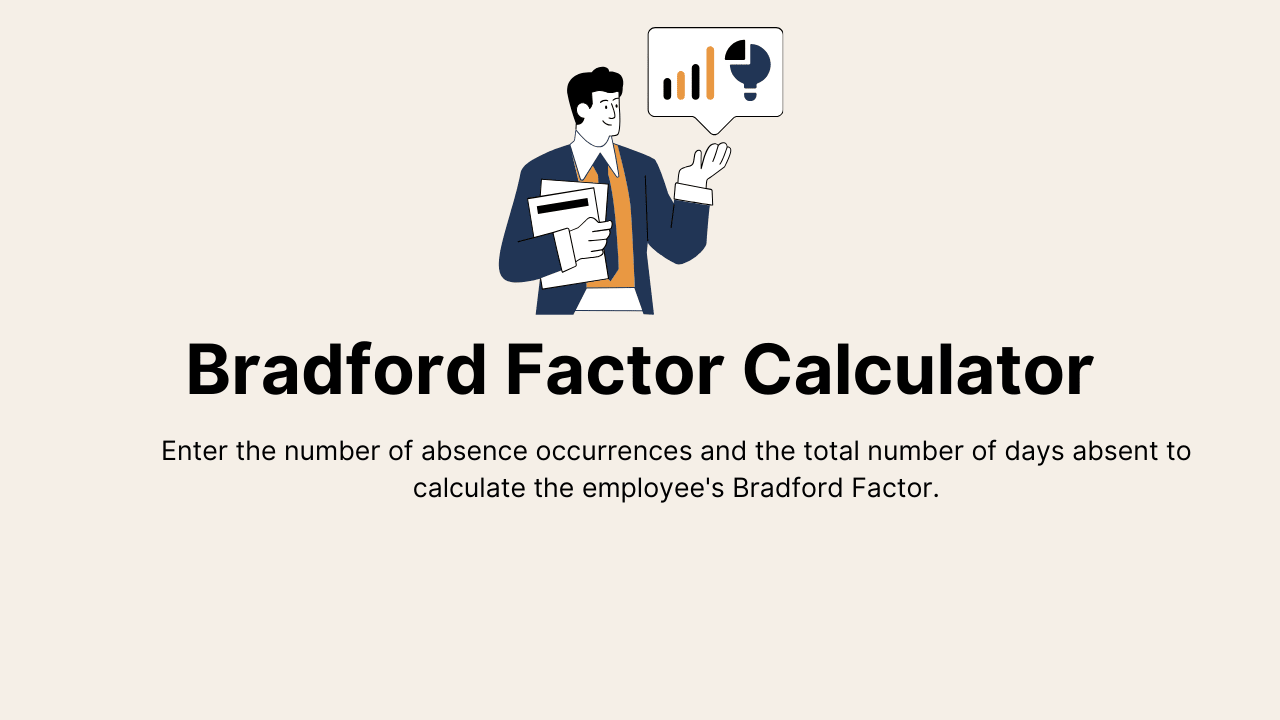Bradford Factor Calculator
Enter the number of absence occurrences and the total number of days absent to calculate the employee's Bradford Factor.
What is the Bradford Factor?
The Bradford Factor is a formula used to calculate the impact of employee absence. It gives more weight to frequent short-term absences compared to longer but less frequent ones. This allows employers to monitor and address patterns of absenteeism that can significantly affect productivity.
Bradford Factor Formula
The Bradford Factor is calculated using the following formula:
Where:
- = Total number of separate absences in a given period
- = Total number of days absent during the same period
Why Use the Bradford Factor?
The Bradford Factor is especially useful for:
- Identifying patterns of frequent short-term absences
- Addressing attendance issues fairly and consistently
- Supporting HR decisions like warnings, appraisals, or interventions
- Improving workforce management and planning
Bradford Factor Score Guidelines
While every organization may have its own thresholds, here is a general guideline:
| Bradford Score | Risk Level | Suggested Action |
|---|---|---|
| 0 – 49 | Low | No concern |
| 50 – 124 | Moderate | Monitor |
| 125 – 399 | High | Consider taking action |
| 400+ | Very High | Formal disciplinary action |
Example Calculation
Let’s say an employee has been absent 4 times over the past year and was absent for a total of 12 days.
Using the Bradford Formula:
In this case, the Bradford Factor is 192, which indicates a high level of absenteeism and may require management attention.

Related Calculators
Help Improve This Tool
Your suggestions help us make better tools for everyone.